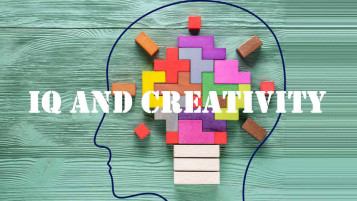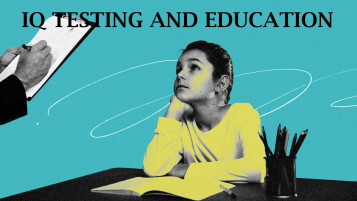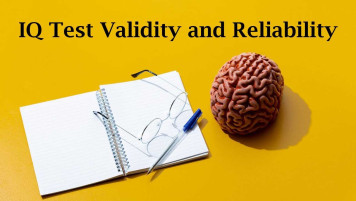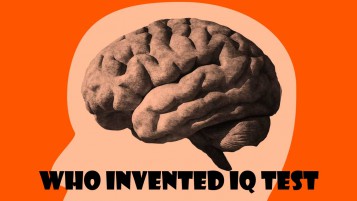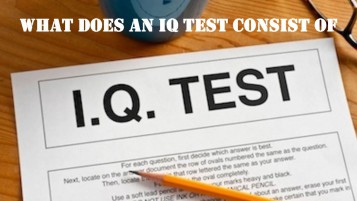IQ grabs headlines and sparks hot takes, but the public debate often blurs what these tests actually do. At their core, IQ tests are standardized measures of how people learn, reason, and solve problems. They don’t capture everything that matters like creativity, values, or motivation and they’re not flawless. Still, when developed and used properly, they’re among the most carefully validated tools in psychology.
Here we tackle the most common myths about IQ with evidence from psychometrics, neuroscience, and long-term studies. The takeaway is simple: IQ isn’t destiny and it isn’t useless. Used as intended and alongside other information it’s a powerful piece of the puzzle for understanding human ability.
Reality: Well-constructed IQ tests do measure core facets of intelligence such as learning ability, general reasoning, and the capacity to acquire and use knowledge through standardized tasks sampled across verbal, quantitative, spatial, working-memory, and processing-speed domains (Neisser et al., 1996). The field has spent over 100 years refining these instruments, with strict rules for reliability, validity, and fairness codified in the Standards for Educational and Psychological Testing (AERA, APA, & NCME, 2014).
No alternative self/peer estimates, grades, ad-hoc “agility” scales consistently outpredicts well-validated cognitive tests for how quickly and accurately people learn and solve well-defined problems. In fact, relying on informal judgments usually increases bias relative to using standardized tools (AERA, APA, & NCME, 2014).
Key takeaway: IQ tests don’t capture all of intelligence, but they validly sample core cognitive abilities better than the common substitutes we use in everyday life.
Reality: Thousands of studies show that IQ scores predict academic performance, job performance, occupational attainment, health, and even longevity (Deary, Penke, & Johnson, 2010; Neisser et al., 1996). Effects are not perfect, no single variable explains everything—but they are robust by social-science standards. Schooling also matters: meta-analytic evidence suggests each additional year is associated with small but reliable IQ gains (~1–5 points on average), underscoring that ability and environment interact (Ritchie & Tucker-Drob, 2018).
Key takeaway: IQ has practical, real-world predictive power; dismissing it as “useless” is contradicted by decades of data.
Reality: It’s not a contest. In complex roles, cognitive ability often explains more variance in performance than any single non-cognitive trait, while emotional intelligence (EQ) and personality add meaningful incremental value especially for teamwork, leadership, and customer-facing work (Côté & Miners, 2006). The oft-quoted “EQ is 80% of success” line is a misinterpretation; the accurate view is that many factors besides IQ also matter.
Key takeaway: Use both IQ and EQ. Hiring and development work best when cognitive tests are combined with structured behavioral interviews, work samples, and validated measures of interpersonal skill.
Reality: “Learning agility” is appealing but inconsistently defined in research. When it means learning ability, IQ tests are the best-validated measures we have; when it means coachability/reflectiveness, it overlaps more with personality and motivation. Either way, new labels should meet the same psychometric standards as existing tools: clear constructs, reliability, validity, and proof they predict outcomes beyond what we already measure (AERA, APA, & NCME, 2014).
Key takeaway: Don’t replace a validated predictor with a buzzword. Add new constructs only when they show incremental validity.
Reality: Intelligence is multifaceted, but not infinitely so. The best-supported framework divides ability into fluid intelligence (Gf) – reasoning and learning in novel situations – and crystallized intelligence (Gc) – acquired knowledge and verbal competence. Modern test batteries (e.g., CHC theory) include additional broad and narrow abilities (processing speed, visual/auditory processing, working memory) (McGrew, 2009). Many proposed “intelligences” are valuable life skills, but to count as an intelligence they should show psychometric coherence and predictive value above IQ.
Key takeaway: Celebrate diverse strengths – but keep the scientific bar for adding “new intelligences.”
Reality: Causality runs in both directions, but not equally. Schooling produces modest IQ gains on average (Ritchie & Tucker-Drob, 2018), yet pre-existing cognitive ability strongly predicts educational attainment and achievement test performance (Neisser et al., 1996). In practice, admissions tests and GPA often preserve the initial rank ordering, reflecting selection plus instruction.
Key takeaway: Education matters – and so does prior ability. Treat them as partners, not rivals.
Reality: Anecdotes aside, across the normal range higher cognitive ability is associated with better social adjustment and fewer externalizing problems, on average (Nisbett et al., 2012). At the extremes of functioning, patterns can differ, but the blanket stereotype of the brilliant misfit doesn’t hold up well in aggregate data.
Key takeaway: Intelligence and social skills are not mutually exclusive.
Reality: This is complex and important. Group average differences in scores reflect both environmental inequalities (education quality, health, stress, neighborhood risk, test familiarity) and the reality that tests can be misused (Helms, 1992; Suzuki & Ponterotto, 2008). Yet transparent, standardized testing paired with adverse-impact monitoring, multiple assessment methods, and structured decision rules is typically more meritocratic than informal proxies like prestige schooling or unstructured interviews (AERA, APA, & NCME, 2014).
Key takeaway: Use validated tests responsibly as one input in fair, multi-method selection; they beat opaque gatekeeping.
Reality: Short online quizzes are fun, but they are not standardized IQ tests. Even the famous Cognitive Reflection Test (CRT) captures a specific tendency (reflection vs. intuition), not full-scale intelligence (Frederick, 2005). Valid IQ measurement requires trained administration, representative norms, and evidence of reliability and validity (AERA, APA, & NCME, 2014).
Key takeaway: Enjoy puzzles; get clinical-grade testing only through standardized procedures.
Reality: Cognitive training tends to improve what you practice (near transfer), but broad, durable gains to general intelligence (far transfer) are limited. Meta-analyses report small or unreliable far-transfer effects for working-memory/game training (Melby-Lervåg & Hulme, 2013), with clearer benefits for specific skills like spatial training (Uttal et al., 2013). By contrast, sleep and aerobic exercise show consistent benefits for memory and executive function (Walker & Stickgold, 2006; Hillman, Erickson, & Kramer, 2008).
Key takeaway: Skip miracle claims. The best brain boosts are still sleep, movement, continual learning, and healthy challenge.
IQ tests are designed to estimate broad and specific cognitive abilities, not the full range of human strengths. They don’t directly measure creativity, wisdom, domain-specific expertise, values, motivation, or personality traits that also shape real-world outcomes. In selection and education, prediction improves when cognitive data are combined with other evidence – e.g., structured work samples, personality measures, and past performance rather than treated as a single gatekeeper (Schmidt & Hunter, 1998). Classroom frameworks that label many “intelligences” are popular, but as independent intelligences they have limited empirical backing; modern psychometrics instead models multiple broad abilities under a higher-order factor (Waterhouse, 2006; Jung & Haier, 2007).
Use IQ or general ability measures only when they are job- or curriculum-relevant, standardized, and supported by technical documentation. Report score uncertainty (e.g., confidence intervals) and provide appropriate accommodations to reduce construct-irrelevant barriers. For hiring or placement, build multi-method systems that blend cognitive tests with structured interviews and work samples, and monitor for adverse impact over time (AERA, APA, & NCME, 2014; Schmidt & Hunter, 1998). In education, treat ability and schooling as co-acting influences—raise standards and learning time, because more schooling can causally lift cognitive performance, while recognizing individual differences in prior ability (Ritchie & Tucker-Drob, 2018).
In conclusion, IQ tests are useful but limited tools. They validly sample core cognitive abilities and predict important outcomes but they don’t define creativity, character, motivation, or opportunity. The smartest approach is balanced: combine standardized cognitive measures with evidence-based assessments of personality, skills, and experience; use structured, fair decision processes; and invest in environments—education, health, lower stress—that let ability show up. Enjoy the headlines, but ground judgments in science, not myths.
